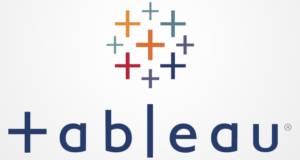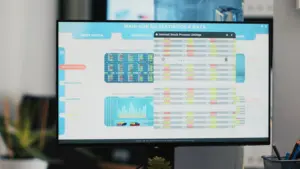How can I improve the interest, dynamism, relevance, and acceptance of my Data Visualization by various audiences? These issues are top-of-mind for everyone creating a visualisation, whether you’re a novice or an experienced data analyst because you want to make it fantastic. Visualisations can tell a compelling story if done effectively. Additionally, they can shed light on information and features that a spreadsheet, bar chart, or pie graph might not reveal. Consider what you want the visualisation to achieve before diving into the details, as this will assist you to choose which data to include. Think about the following questions:
- Who is my audience?
- What questions do they have?
- What answers am I finding for them?
- What am I trying to say?
- What other questions will my visualisation inspire or what conversations may result?
When you’re ready to start creating, use these ideas and tricks to make your visualisation engaging and intuitive so that viewers will understand the intended messages clearly and leave with concrete, practical takeaways. Check out the Tableau online training to get more valuable information.
1.Select the Data Visualization appropriate graphs and charts for the task.
There is no one format that fits everyone, so carefully analyse and select the appropriate format for your visualisation that will best communicate the story and provide answers to important issues raised by the data while still advancing your core objective. Sometimes it might even be beneficial to combine related charts; this can encourage further investigation that results in useful business insights and solutions that motivate action. Which formats are common?
- When comparing categories within a single metric, bar charts are one of the most common data visualisations. They work best when you have data that can be divided into several categories.
- Bullet charts were created to take the place of dashboard gauges, metres, and thermometers and demonstrate progress toward a goal by comparing measures.
- The line graph joins various distinct data points and displays them as a single, ongoing progression. As a result, it becomes easy to see how one value changes in relation to another.
- Box plots and histograms help compare categories and illustrate where your data is clustered.
- Maps are a no-brainer for helping with geographical investigation or visualising location-specific questions.
- Pie charts are useful for adding detail to other visualisations, but they are less strong when used alone. In fact, data scientist Kaiser Fung and his colleague discover a pie chart every year on Pi Day (March 14), and remake it into a more suitable version, as their way of protesting against flagrant overuse.
2.Use predictable patterns for layouts
Humans are naturally visual beings. We are drawn to indications that provide us with critical information quickly. It might be quite challenging to understand what the visualisation means if the patterns are random or make no sense. Make sure the sequence or manner in which you show data, whether it be numerical, alphabetical, or sequential, makes sense to viewers in order to take advantage of these human tendencies. For instance, if you are speaking in a language that is written from left to right, you should position your visualisation accordingly. Make sure the links between the data are obvious if you’re using numerous graphs and that the order of the data is consistent. You don’t want your audience to become disoriented when following one point to another quickly and easily.
3.Tell data stories quickly with clear colour cues
Colour is crucial. Without using words, it may say a lot. However, employing colour requires a delicate balance; it’s better to keep things straightforward. To emphasise and highlight the content, use colour. Using a single colour or too many shades of it can make the data merge, while using too many colours would produce a cacophony. Colour connection is important. Use colours that the viewer can understand intuitively to help them comprehend the information more quickly. When dealing with temperatures, you should choose red for hot and blue for cold. Additionally, how you use colour has a significant impact. It is beneficial to emphasise differences in the data or to demonstrate consistency across values.
4.Data Visualization Incorporate contextual clues with shapes and designs
Context makes it easier for us to understand information quickly rather than after carefully reading it. Subject matter forms can convey a powerful narrative. For instance, a graphic on endangered species in Africa can be used which reveals to us at a glance which creatures are threatened and to what extent. Using animal silhouettes makes it much more engaging and intuitive than using bar charts with values, where each animal is reduced to numbers and words that cause the data and the viewer to become lost.
5.Strategically use size to visualise values
Size can assist highlight important information and provide more context. The endangered animal shapes in the previous illustration mimic an animal’s size in relation to other animals. Size, though, can also signify scaled values. Shape size can be adjusted depending on data values rather than colour. With maps, using size to denote values also works well. It is challenging to distinguish values when there are several data points on a Tableau visualisation that are the same size and blend together. The visualisation is simpler to use by relating the size to value and adding colour as another identifier.
6.Apply text carefully and intentionally
Last but not least, the type and quantity of language you employ can influence how well you visualise. Even while too much or poorly organised text can be distracting, there are situations when relying solely on images is insufficient. When utilising text, make sure it draws attention to crucial information, such as the unique contributions made by the Beatles’ members to the iconic songs and albums they issued at the height of their fame. Despite the fact that our brains are programmed to comprehend patterns and visuals rather than words, using text effectively can have a significant impact.
Conclusion
To learn more about how to use Tableau more effectively, check out the online Tableau training.






























2 Responses